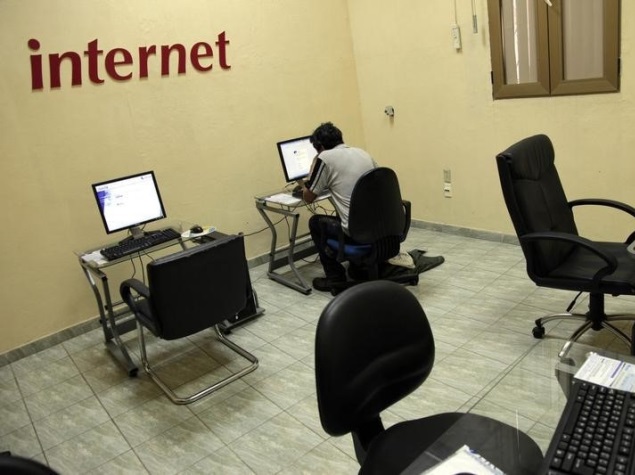- Home
- Telecom
- Telecom News
- Telecom Commission Defers 8 Percent Licence Fee on ISPs
Telecom Commission Defers 8 Percent Licence Fee on ISPs

The Department of Telecom (DoT) Secretary Rakesh Garg, who also chairs the Telecom Commission, at a meeting of the commission last week said the proposal needs to be discussed further as levying an annual fee may lead to a rise Internet tariffs and charges, sources said.
The proposal could hit government's plans to successfully implement the Digital India programme, a pet project of Prime Minister Narendra Modi, they added.
"DoT is of the view that imposing a fee on ISPs could hinder their efforts of connecting the cities and rural area through Internet and that will in turn impact Digital India," sources said.
Digital India is an umbrella programme with an outlay of Rs. 1.13 lakh crores, which includes projects that aim to ensure government services are available to citizens electronically and people get benefits of the latest technology.
Earlier this year, sectoral regulator Trai suggested a new definition of revenue for ISPs on which the government should levy 8 percent annual fee.
Trai had suggested a uniform licence fee of 8 percent of the AGR (adjusted gross revenue) for all ISP and ISP-Internet Telephony licences.
Government levies licence fee on AGR of telecom firms after deducting some components that are not earned from telecom services.
Trai had earlier also recommended that government levy 8 percent licence fee from April 1, 2013, but the proposal was deferred then, after questions raised on revenue items that should be considered for calculating the final charges.
Industry body Internet Service Providers Association of India had said the move to increase licence fee on Internet services will adversely affect its target to achieve 175 million broadband connections by 2017 and 600 million by 2020 as it will increase service tariffs.
ISPAI had also said if government includes deduction of bandwidth and lease line charges to pass through than Internet rates will rise only 8 percent. If not, then cascading effect will be to the tune of 25-30 percent.
Government's National Telecom Policy 2012 aims to provide affordable and reliable broadband-on-demand by the year 2015 and to achieve 175 million broadband connections by the year 2017 and 600 million by the year 2020 at minimum 2Mbps download speed and making available higher speeds of at least 100Mbps on demand.For the latest tech news and reviews, follow Gadgets 360 on X, Facebook, WhatsApp, Threads and Google News. For the latest videos on gadgets and tech, subscribe to our YouTube channel. If you want to know everything about top influencers, follow our in-house Who'sThat360 on Instagram and YouTube.
Related Stories
- Samsung Galaxy Unpacked 2025
- ChatGPT
- Redmi Note 14 Pro+
- iPhone 16
- Apple Vision Pro
- Oneplus 12
- OnePlus Nord CE 3 Lite 5G
- iPhone 13
- Xiaomi 14 Pro
- Oppo Find N3
- Tecno Spark Go (2023)
- Realme V30
- Best Phones Under 25000
- Samsung Galaxy S24 Series
- Cryptocurrency
- iQoo 12
- Samsung Galaxy S24 Ultra
- Giottus
- Samsung Galaxy Z Flip 5
- Apple 'Scary Fast'
- Housefull 5
- GoPro Hero 12 Black Review
- Invincible Season 2
- JioGlass
- HD Ready TV
- Laptop Under 50000
- Smartwatch Under 10000
- Latest Mobile Phones
- Compare Phones
- Moto G15 Power
- Moto G15
- Realme 14x 5G
- Poco M7 Pro 5G
- Poco C75 5G
- Vivo Y300 (China)
- HMD Arc
- Lava Blaze Duo 5G
- Asus Zenbook S 14
- MacBook Pro 16-inch (M4 Max, 2024)
- Honor Pad V9
- Tecno Megapad 11
- Redmi Watch 5
- Huawei Watch Ultimate Design
- Sony 65 Inches Ultra HD (4K) LED Smart TV (KD-65X74L)
- TCL 55 Inches Ultra HD (4K) LED Smart TV (55C61B)
- Sony PlayStation 5 Pro
- Sony PlayStation 5 Slim Digital Edition
- Blue Star 1.5 Ton 3 Star Inverter Split AC (IC318DNUHC)
- Blue Star 1.5 Ton 3 Star Inverter Split AC (IA318VKU)

















